A Mile In The Shoes Of A Volcanologist
Meet Kayla Iacovino, a NASA petrologist (and Star Trek superfan) who looks for tiny clues atop volcanoes to understand eruptions on Earth and beyond.
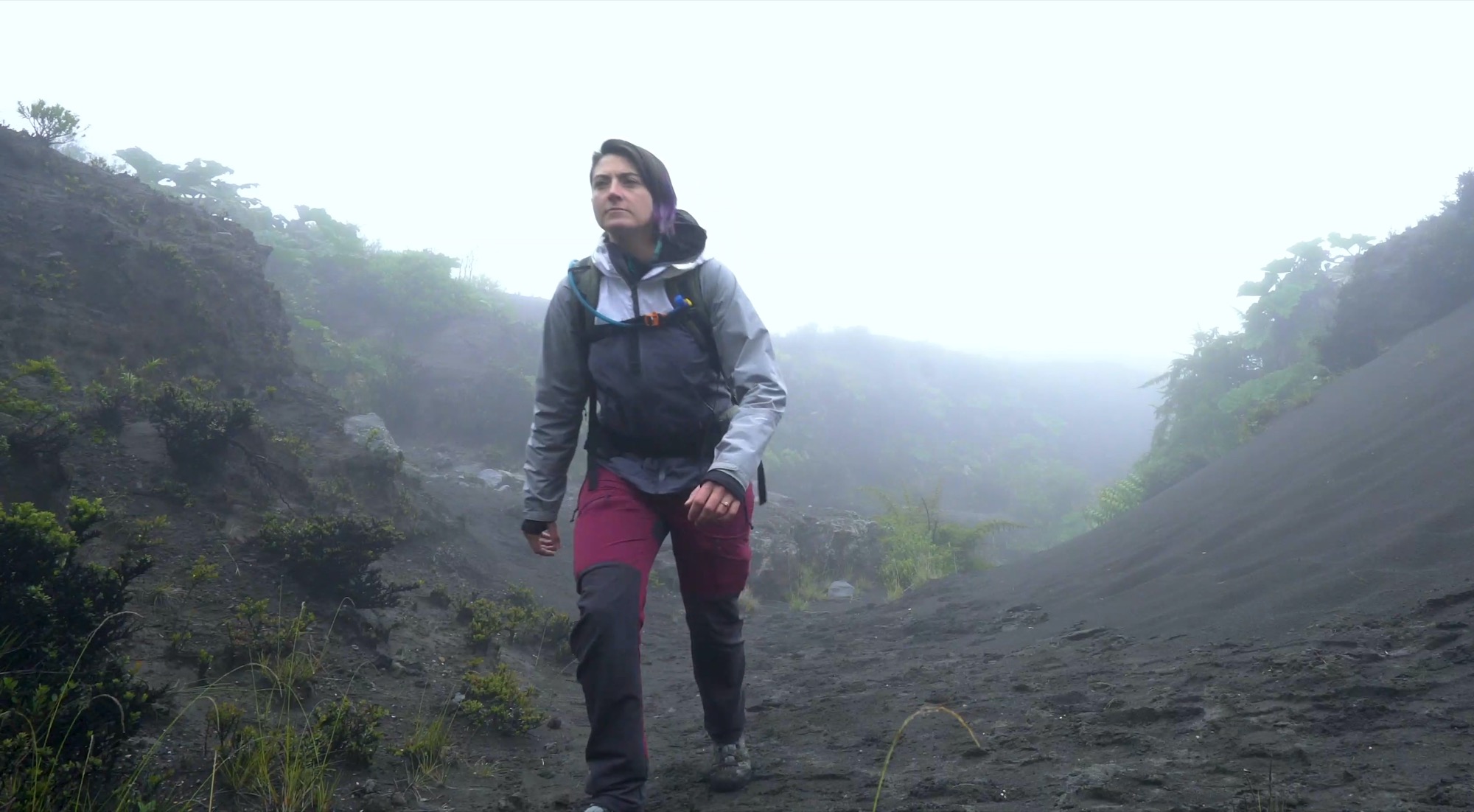
Kayla Iacovino, volcanologist. Credit: © Science Friday
This article by Gabriela Serrato Marks was originally published on Massive Science. The story is a part of Breakthrough, a short film anthology from Science Friday and Howard Hughes Medical Institute (HHMI) that follows women working at the forefront of their fields. Learn more and watch the films at our Breakthrough spotlight.
There are more than 1,500 potentially active volcanoes spread across Earth—and that doesn’t count the continuous chain of volcanoes on the seafloor. Scientists are constantly learning more about volcanic eruptions, but there’s still so much to discover. Kayla Iacovino is a volcanologist studying eruptions on Earth and beyond. She works at NASA’s Johnson Space Center in Houston, Texas. She’s also a Star Trek superfan (like, she’s the executive editor for a Star Trek website), just like Mae Jemison. Iacovino chatted with Massive about her experiments, her fieldwork, and how she got to her current job. This conversation has been edited for clarity.
Gabi Serrato Marks: To start off, what is your favorite Earth volcano?
Kayla Iacovino: That’s so hard. I have so many. I guess right now, it’s Mount Paektu, which is on the border between China and North Korea. Partly because it’s this sort of mysterious giant. There’s not a lot known about it because it’s in such a geopolitically difficult area. It’s difficult to access, obviously, and difficult to put instruments on and get samples from. But it’s a huge volcano and it produced one of the largest eruptions—maybe the largest eruption—in recorded human history. And I got to travel to North Korea in 2013 to do fieldwork there.
Serrato Marks: What was it like to work on that research project? What was hard about it and what was really cool about it?
Iacovino: It was really awesome. Part of the project was working with scientists in North Korea, so it was a science and science diplomacy kind of deal, using collaborations between us as researchers as a way to have some kind of cultural exchange and establish a relationship between their country and other partner countries.
I think just about every aspect of it was completely interesting because it was so unusual. I was very lucky that I was brought on to the team after quite a bit of logistic work has been done. And as a student on that project, I wasn’t the lead dealing with all this stuff, but it was fascinating to watch James Hammond, the guy in charge. He spent at least two years getting all of the permissions and the paperwork in place to bring our instruments there, to bring people there, to just sort everything out for this two-week field trip.
Everything from start to finish was new to me. I hadn’t spent any time in Asia at all before I went there, so that was a complete learning experience.
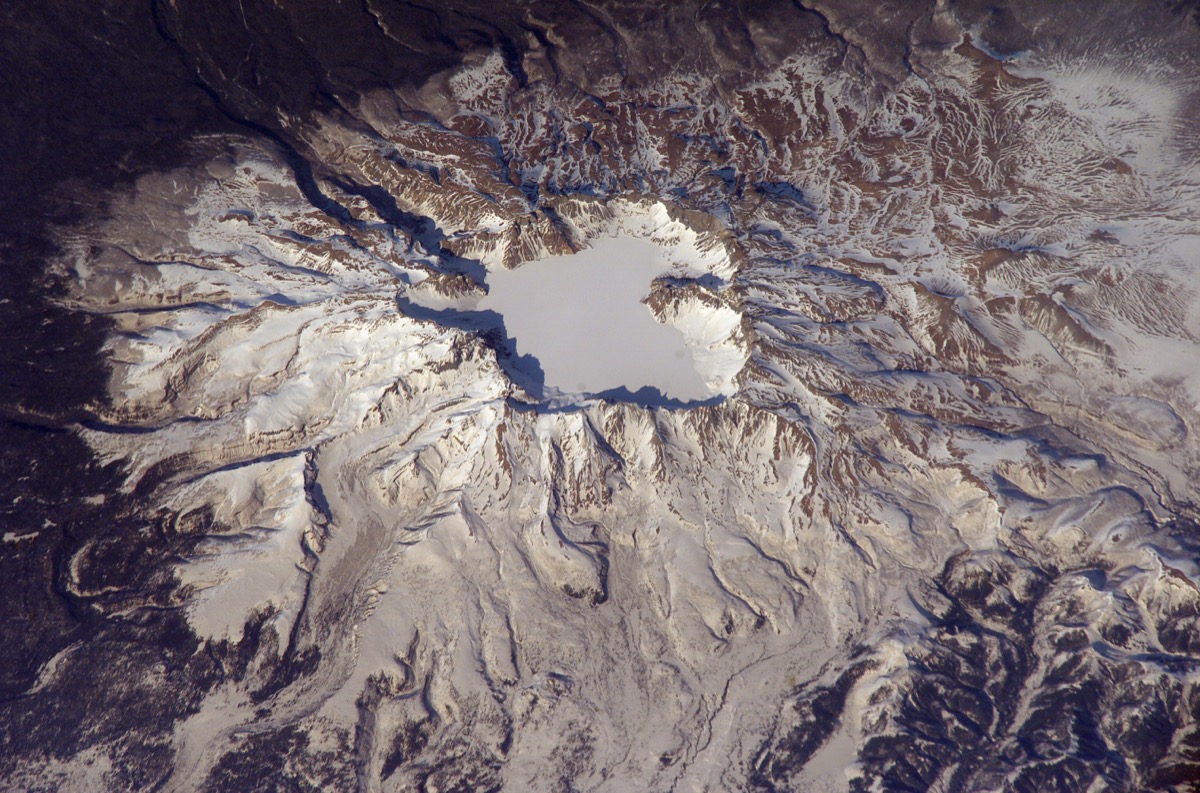
Mt. Paektu, seen from above. The large volcano, known as Changbaishan in China and P'aektu-san in North Korea, is on the border between the two countries. Credit: NASA/Johnson Space Center
Serrato Marks: How did it go once you were in North Korea?
Iacovino: Before we went out in the field, we were in Pyongyang going around to different government offices, sitting at big tables, and listening to people talk to us. I just kind of sat there quietly and tried to take everything in. But once we got into the field, it was like any other field trip. We were singing and laughing, showing each other the rocks, and asking each other questions. When you’re in the field, there are no flags. We were all just there to work together. When we were out in the field there is never any tension at all. It was an awesome opportunity to be part of that.
Even with the geopolitical aspects completely aside, I’m just glad to have been able to go because it’s just such a wonderful place. The rocks are so interesting and we got to tell this cool story about them. It’s amazing to think about how much work went into it, and that it was really a complete success in terms of what we set out to do, and what we were able to get out of it. We had two big papers that came out of it, one of which was first-authored by one of our North Korean colleagues, and on the other paper, about half of the authors were from North Korea. It was a tremendous opportunity to be able to have my name alongside their names and on the thing that we got to collaborate on.
Serrato Marks: To me, as a geologist, volcanoes are fascinating and amazing, but I’m also aware that they have this destructive capacity. How can volcanic eruptions impact people?
Iacovino: There are so many reasons that a volcano might impact a person, depending on where they are on Earth. Even if they’re not near a volcano, like in the middle of Iowa, they might be impacted indirectly in a number of ways if there’s a big eruption that disrupts global trade routes. It might be something as small as an increase in the price of a product that they buy because it’s coming from overseas, or a food item that they can’t get because that year the crop was decimated by an eruption.
And then, of course, there are people who experience much more direct impacts, the people who are living near and on top of volcanoes, which is the case all over the world. We often think of that happening with small populations like in Hawaii or in lower-income countries, places like Costa Rica, Nicaragua—it might feel far away from the U.S. But there’s also somewhere like Naples: a huge city where millions of people live right on top of an active volcano, so volcanoes are in their everyday lives.
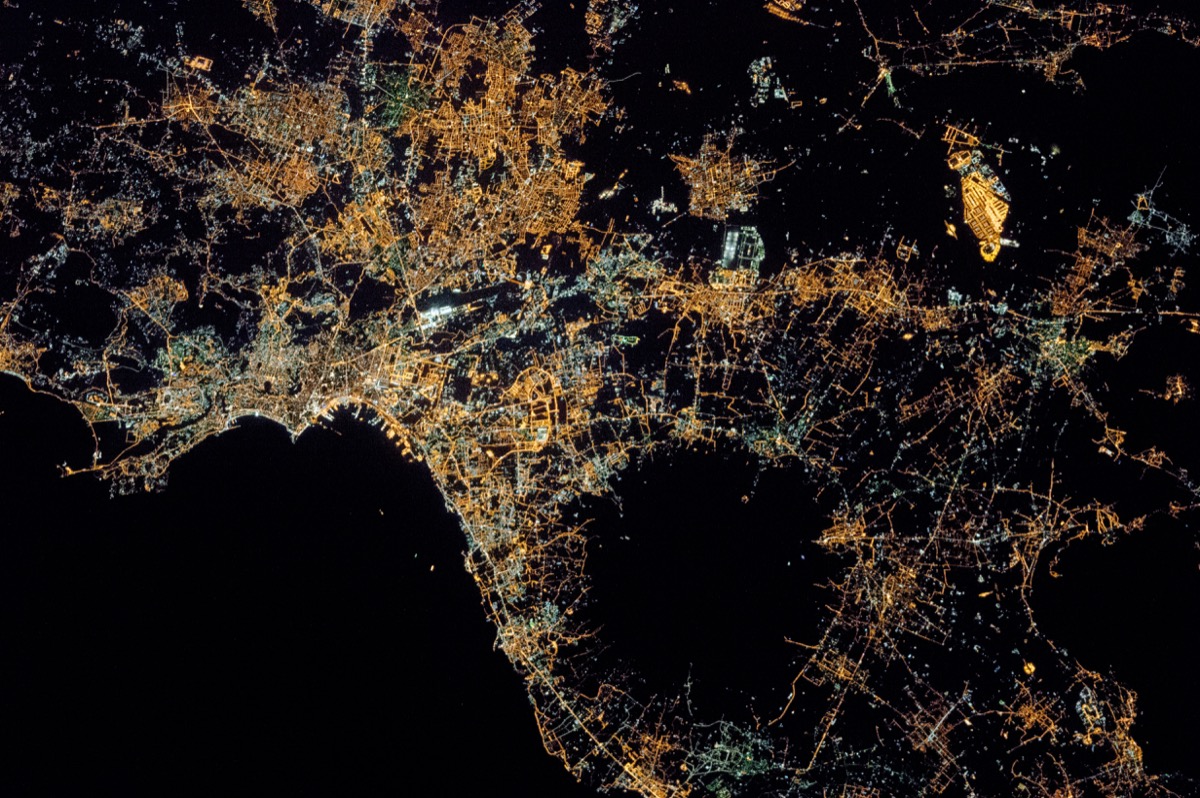
The city of Naples, on the left, near by the Phlegarean Fields and Mount Vesuvius (black circle at lower right). Credit: NASA/ISS/Johnson Space Center
Serrato Marks: What questions or misconceptions do you hear about a lot, in terms of eruptions?
Iacovino: I frequently get asked if the number of volcanic eruptions is increasing because it seems to most people like it is. The truth is just that news coverage of eruptions is becoming more widespread. Globalization is making the world a smaller place, and we’re seeing news from all over the world. 20 years ago, someone in the US wouldn’t have heard about an eruption in Indonesia because it wouldn’t make the headlines. But now with the internet, it’s becoming more and more apparent. It’s nice to at least see that people are being exposed to that more, and are realizing that people who live in other parts of the world have different lives that are more directly impacted by volcanism.
Serrato Marks: You’re an experimental petrologist [Ed: a scientist who studies rocks and how they form], so you’re thinking about geochemistry a lot, right? Given the hazards associated with volcanoes, why should non-scientists care about the chemistry of ancient eruptions?
Iacovino: That’s a really good question, and I think there are so many different ways to answer it. As scientists, we work at different perspectives, all the way down to the very nitty-gritty—like, let’s spend an entire day thinking about this one element in this one sample—all the way zoomed out to the big picture of learning something new about the history of the planet or the history of the universe. So it can be difficult, I think, to help people see why they should care when I’m sitting here talking about some tiny piece of diamond. It doesn’t impact their day-to-day life. But when you take a million scientists and they’re all thinking about some little detail and you have an effective way of putting all those details together, you come up with something powerful.
The more we can understand about the processes that drive volcanic eruptions and volcanic activity, the more we can predict what they’re going to do. And the more we can understand how to deal with the impacts of volcanism.
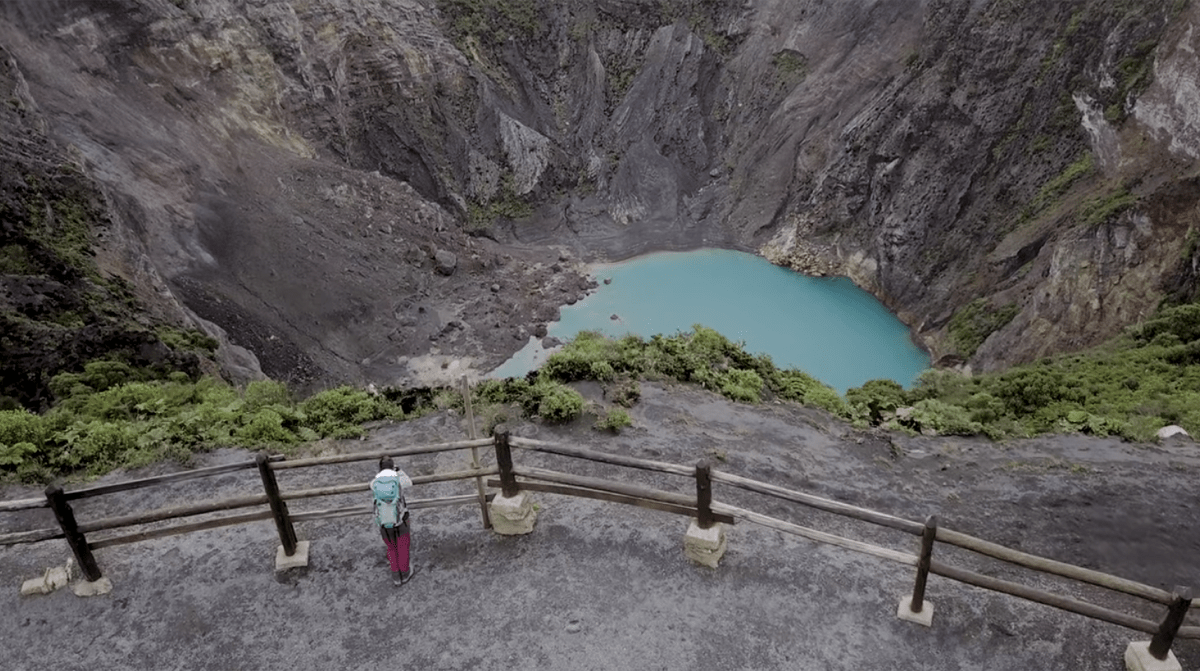
Iacovino at Irazú Volcano in Costa Rica. Credit: © Science Friday
Serrato Marks: Looking forward, how do you see volcanology research changing or expanding in the future?
Iacovino: I think some of the most important future advances will probably be in volcanic hazards. In terms of predictive capabilities, where we are now is really in the infancy. I don’t know if I want to use the word prediction or not, because predicting a volcanic eruption is a very, very hard thing to do. But I think we’re getting to the point where we’re reaching a level of understanding and a level of ability to acquire data where we can start to build models and build tools that help us get information faster. In the future, I think we’ll move into making some predictions about what a volcano is going to do.
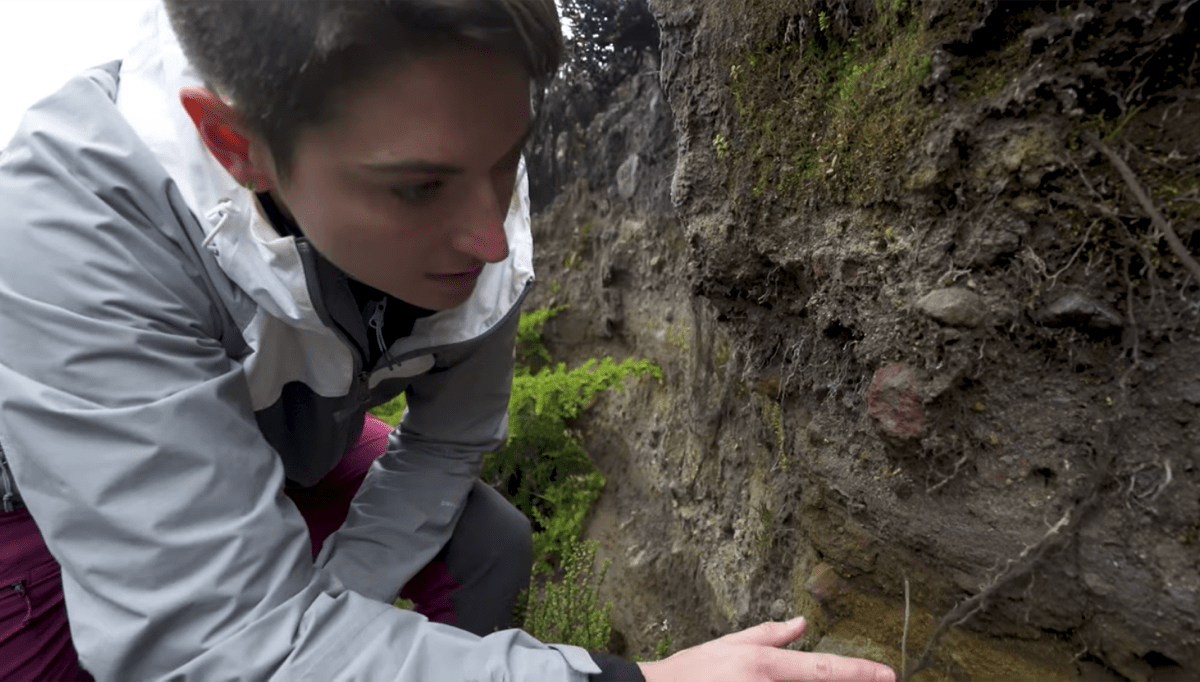
Serrato Marks: It sounds like we still need more volcanologists. What would you recommend that people do if they look at you and they say, “I want her job!” How would you say that people should prepare themselves as kids or adults?
Iacovino: I feel like I still don’t know what I want to do when I grow up. I have some friends that are volcanologists that were like, “Yeah, I wanted to be volcanologist since I was five.” That’s super foreign to me because I wouldn’t have ever considered that at that age.
Drawing on my own experience and my own perspective I would say, just be really open to stuff. And even if you think, “I definitely want to go be a volcanologist,” that might change and that’s okay. If you go to school, and you learn about some other career that you hadn’t heard of before, just follow that. Follow your heart, and see what path that leads you down and find something that you’re passionate about.
Watch the brand new season of Breakthrough, a short film anthology that follows women working at the forefront of their fields.
Invest in quality science journalism by making a donation to Science Friday.
Gabriela Serrato Marks is a Ph.D. candidate in marine geology at MIT. She uses stalagmites to create past climate records that provide context for future climate change.